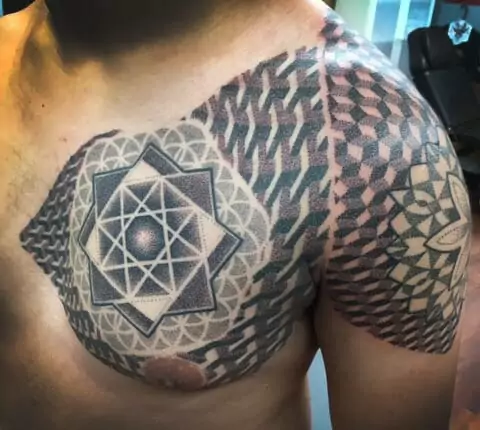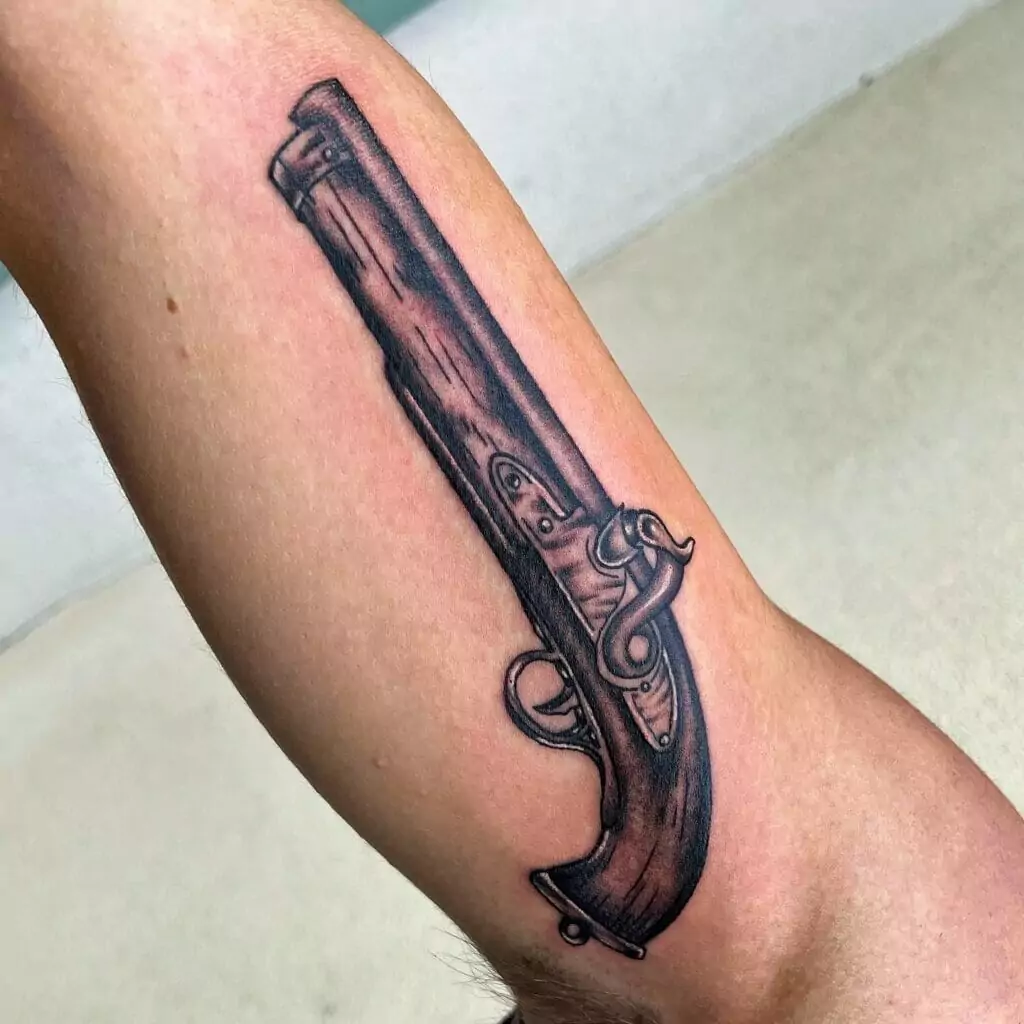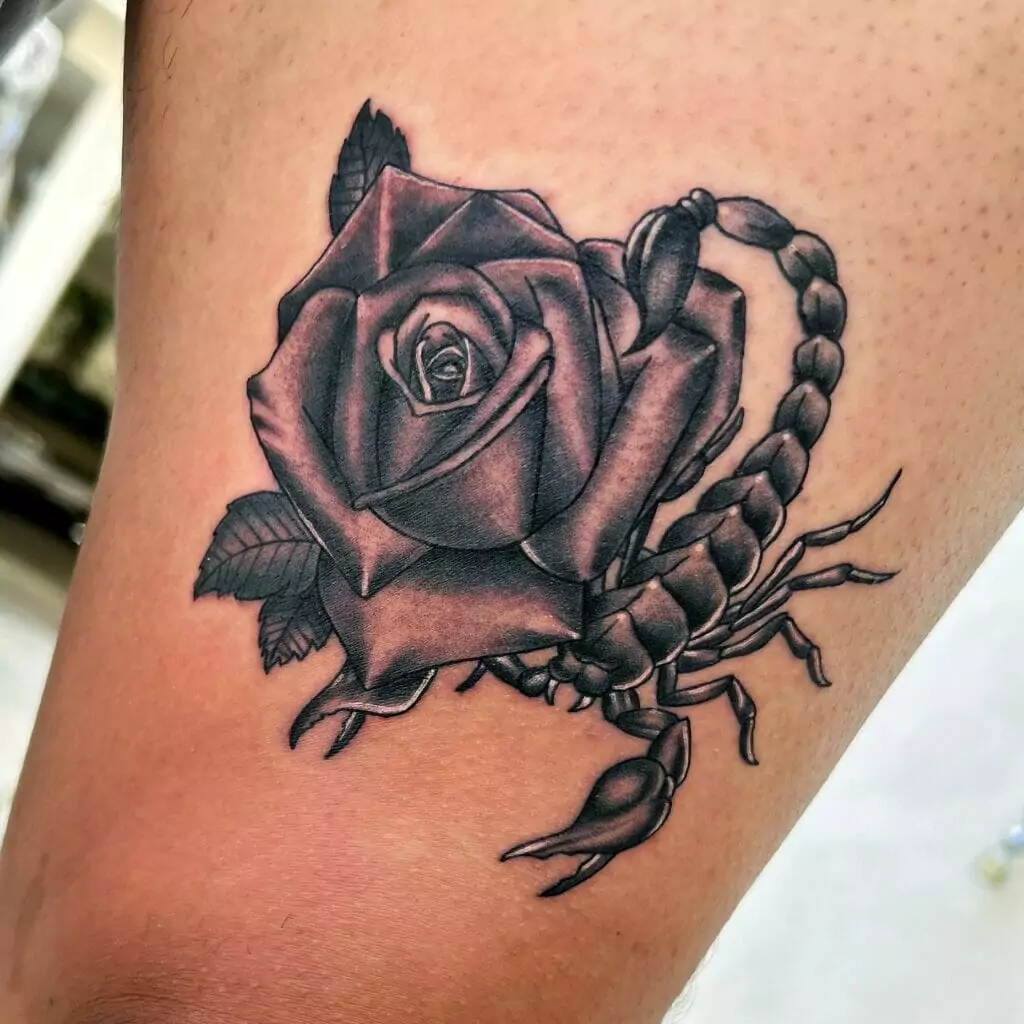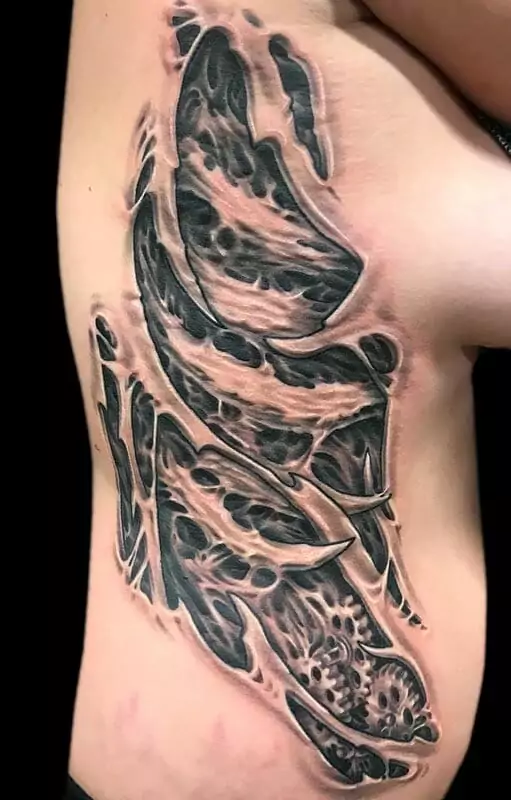Black and gray tattoos have a timeless elegance that has captivated people for decades. This style, characterized by its use of varying shades of black and gray ink, has become increasingly popular in the tattoo industry. The simplicity and sophistication of black and gray tattoos make them a favorite among tattoo enthusiasts and artists alike.
The History of Black and Gray Tattoos: From Prison Culture to Mainstream Art
Black and gray tattoos have their roots in prison culture. In the 1970s and 1980s, inmates would create makeshift tattoo machines using everyday items such as cassette players and guitar strings. Due to limited resources, they would often use black ink made from soot mixed with water, resulting in a monochromatic look.
Over time, this style evolved and gained recognition in mainstream art. Artists like Jack Rudy and Freddy Negrete played a significant role in popularizing black and gray tattoos outside of prison walls. Their work showcased the beauty and versatility of this style, paving the way for its acceptance in the tattoo industry.
The Art of Shading: How Black and Gray Tattoos Create Depth and Texture
One of the defining features of black and gray tattoos is the skillful use of shading to create depth and texture. Shading is crucial in this style as it adds dimension to the design, making it appear more realistic.
Tattoo artists use various techniques to achieve different shading effects. Soft shading involves using light strokes to create a subtle gradient effect, while heavy shading uses bold strokes to create a more dramatic contrast. Dotwork is another technique commonly used in black and gray tattoos, where tiny dots are meticulously placed to create shading.
Examples of tattoos that showcase excellent shading include portraits that capture the intricate details of a person’s face or animals that appear lifelike due to the skillful use of shading.
The Importance of Contrast in Black and Gray Tattoos: Light vs. Dark
Contrast plays a vital role in black and gray tattoos, as it helps create visual interest and make the design stand out. The interplay between light and dark shades is what gives black and gray tattoos their depth and dimension.
Tattoo artists carefully choose the shades of black and gray ink to create contrast. Lighter shades are used to highlight certain areas of the design, while darker shades are used to add depth and create shadows. The contrast between these different shades brings the tattoo to life.
Examples of tattoos that showcase excellent contrast include designs with intricate patterns or landscapes that feature a range of light and dark shades to create a realistic depiction.
The Role of Negative Space in Black and Gray Tattoos: Less is More
Negative space refers to the areas of skin left untouched in a tattoo design. In black and gray tattoos, negative space is often used strategically to create balance and harmony within the design.
By incorporating negative space, tattoo artists can enhance the overall composition of the tattoo. It allows certain elements of the design to stand out while creating a sense of openness and flow. Negative space also adds a level of sophistication to black and gray tattoos, making them visually striking.
Examples of tattoos that showcase excellent use of negative space include minimalist designs with clean lines or geometric patterns that utilize negative space to create intricate shapes.
The Psychology of Black and Gray Tattoos: Symbolism and Meaning

Black and gray tattoos often carry deep symbolism and meaning for those who choose to get them. This style is often associated with emotions, personal experiences, or significant events in a person’s life.
The monochromatic nature of black and gray tattoos can evoke a sense of melancholy or introspection. It allows individuals to express their emotions in a subtle yet powerful way. For some, black and gray tattoos serve as a reminder of past struggles or personal growth.
Examples of tattoos that showcase powerful symbolism and meaning include memorial tattoos that honor loved ones or tattoos that represent overcoming adversity.
The Versatility of Black and Gray Tattoos: From Realism to Abstract
One of the remarkable aspects of black and gray tattoos is their versatility. This style can be used to create both realistic and abstract designs, depending on the artist’s skill and the client’s preference.
Realistic black and gray tattoos aim to replicate the appearance of real-life objects or people. Artists use shading techniques to capture intricate details and create a lifelike representation. On the other hand, abstract black and gray tattoos focus on shapes, lines, and textures to create visually captivating designs.
Examples of tattoos that showcase different styles within black and gray tattoos include portraits that resemble photographs or abstract designs that play with geometric shapes and patterns.
The Evolution of Black and Gray Tattoo Techniques: Hand-Poking vs. Machine
Black and gray tattoos can be created using different techniques, with hand-poking and machine tattooing being the most common methods.
Hand-poking, also known as stick-and-poke, is a traditional tattooing technique where the artist manually inserts ink into the skin using a needle. This method allows for more control and precision, resulting in fine lines and delicate shading.
Machine tattooing, on the other hand, involves using an electric tattoo machine to inject ink into the skin. This technique allows for faster and more efficient tattooing, making it suitable for larger designs or those that require bold lines and heavy shading.
Examples of tattoos created using hand-poking techniques include intricate mandalas or delicate floral designs, while machine tattooing is often used for larger pieces such as full sleeves or back pieces.
The Impact of Skin Tone on Black and Gray Tattoos: How to Choose the Right Design
Skin tone plays a significant role in how black and gray tattoos appear on the skin. Different shades of black and gray ink may look different on various skin tones, so it’s essential to choose the right design that complements the individual’s complexion.
For individuals with lighter skin tones, a wider range of shades can be used to create contrast and depth. Darker shades of black and gray ink may appear more vibrant on lighter skin, allowing for more intricate details to be visible.
On the other hand, individuals with darker skin tones may opt for lighter shades of black and gray ink to ensure that the tattoo stands out against their complexion. The contrast between the tattoo and the skin can create a striking effect.
Examples of tattoos that showcase different designs on different skin tones include floral designs with delicate shading on lighter skin or bold geometric patterns with lighter shades of gray on darker skin.
The Care and Maintenance of Black and Gray Tattoos: Tips for Longevity
Proper care and maintenance are essential for ensuring the longevity of black and gray tattoos. Here are some tips to keep in mind:
1. Follow the aftercare instructions provided by your tattoo artist, which may include washing the tattoo gently with mild soap, applying a thin layer of tattoo ointment, and avoiding direct sunlight or soaking in water.
2. Keep your tattoo moisturized by applying a fragrance-free lotion or tattoo-specific moisturizer regularly. This helps prevent dryness and keeps the tattoo looking vibrant.
3. Protect your tattoo from excessive sun exposure by applying sunscreen with a high SPF whenever it is exposed to sunlight. UV rays can cause fading and damage to the tattoo over time.
4. Avoid picking or scratching at your tattoo, as this can lead to scarring or color loss. If you experience any itching or discomfort, gently pat the area instead of scratching.
5. Schedule touch-up sessions with your tattoo artist as needed. Over time, black and gray tattoos may fade or lose some of their vibrancy. Touch-ups can help maintain the integrity of the design.

The Timeless Elegance of Black and Gray Tattoos
In conclusion, black and gray tattoos have a timeless elegance that continues to captivate people around the world. The history, artistry, and symbolism behind this style make it a popular choice for those looking to express themselves through body art.
Whether it’s the skillful use of shading, the importance of contrast and negative space, or the versatility of black and gray tattoos, this style offers endless possibilities for both artists and clients. With proper care and maintenance, black and gray tattoos can remain vibrant and visually striking for years to come.
If you’re considering getting a tattoo, why not explore the beauty of black and gray? Whether you choose a realistic portrait or an abstract design, black and gray tattoos are sure to make a lasting impression.



